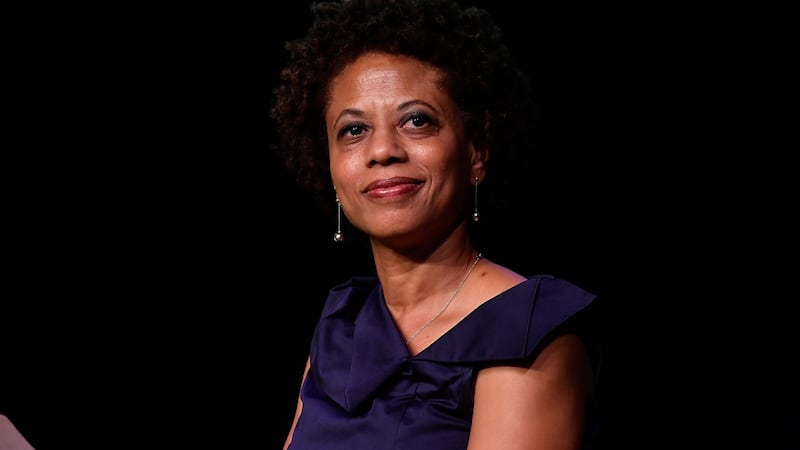In 1936, the French novelist and screenwriter Vladimir Pozner took a long trip around the United States. The richly impressionistic account he published in French two years later was called Les États Désunis – the Disunited States, a title that resonates as much now as it did in the era of the Great Depression.
It could perhaps serve as well as any other as a title for the conversations I will have next week as part of the Irish Times Summer Nights Festival with two brilliant women who have been very close to the centre of power in Washington, Melody Barnes and Samantha Power.
One of the things that is so striking in Pozner's encounters with Americans is how short history seems. In Concord, Massachusetts, birthplace of the American Revolution, he meets an elderly man who sits by the bridge, selling his own watercolours of local scenes. The man tells him he was taught to paint by a sister of Louisa Alcott, who wrote Little Women.
He recalls the quintessential American liberal thinker Ralph Waldo Emerson and another great novelist, Nathaniel Hawthorne. "I knew Emerson, but not as well as I knew Hawthorne. I usually saw him go by around sunset, Hawthorne, out for a walk. He gave me pencils when I was a schoolboy. I sold three of them to teachers and I still have some at home. I saw soldiers returning from the Civil War."

In Harlem, Pozner meets Miss Pleasant, an 83-year-old “tiny bird of a woman”. She was born, she tells him, in December 1853, on a plantation in Virginia, as one of 500 slaves owned by a man called Buck Walker. “My masters gave me to their little daughter for Christmas, and she was very nice to me. I did not learn to read, but I know many things . . . I know how to pick cotton – like this, fingers together and pulling upward.”
Miss Pleasant remembered that when she was six, she saw John Brown, the fiery anti-slavery warrior who was hanged shortly afterwards and whose body, in the marching song of the Union army in the Civil War, “lies a-mouldering in the grave” while his “soul is marching on.” “He spoke very well, that man,” Miss Pleasant remembered. “He said, ‘God don’t allow anyone to have slaves.’”
Pozner asks: “‘Miss Pleasant, are blacks free today?’ She laughs a fierce and mocking laugh. ‘They are more slaves than we were,’ she said. ‘We at least were dressed and fed. In my day, blacks were beaten; today they kill them.’”
Telescoping of time
Reading these words today, there is the same dizzying sense of the telescoping of time that Pozner must have felt in 1936, when hearing a man recalling the soldiers coming back from the civil war to Louisa Alcott’s Concord or watching Miss Pleasant’s muscle memory as her fingers picked imaginary cotton in an apartment in Harlem. “Today they kill them.” Today indeed.
In 2008, when Barack Obama won the US presidential election, it seemed as if some of this history was finally being transcended. The idea of Michelle Obama taking up residence in the White House was in a way even more resonant than her husband's victory: she is the great-great-great-granddaughter of Melvinia Shields, a 15-year-old enslaved girl, and the white man who impregnated her, probably a member of the Irish Shields family that owned her.
The underlying structures of racialised injustice had not gone away, of course. But perhaps, with Obama’s election, America’s long 19th century, the unresolved legacy of slavery, emancipation and civil war, might be coming to a close.
But there was no moment of closure. On the contrary, the election of the first black US president produced a vicious counter-reaction: the election (overwhelmingly by white Americans) of an openly racist president who regards white supremacists as a cherished part of his base.
The 'national heritage' that Trump and his fans really wish to sustain is the heritage of white supremacy
Last weekend, to mark Independence Day, Trump addressed a crowd gathered in front of Mount Rushmore in South Dakota. With his presidency melting into lethal anarchy as his disastrous handling of the coronavirus pandemic continues to wreak havoc, Trump chose to make his last stand on the ground of history.
“Our nation is witnessing a merciless campaign to wipe out our history, defame our heroes, erase our values, and indoctrinate our children. [Boos from the audience.] Angry mobs are trying to tear down statues of our Founders, deface our most sacred memorials, and unleash a wave of violent crime in our cities . . . They are determined to tear down every statue, symbol, and memory of our national heritage.”
Revisionist
Trump also attacked the teachers of revisionist US history. “The radical view of American history is a web of lies — all perspective is removed, every virtue is obscured, every motive is twisted, every fact is distorted, and every flaw is magnified until the history is purged and the record is disfigured beyond all recognition.”
What Trump did not say, of course, is whether or not "our heroes" whose virtues are being obscured and their motives twisted, include the actual target of those who want to remove monuments: the leaders of the pro-slavery Confederacy. The protection of a monument to the Confederate military leader (and slaver) Robert E Lee was the excuse for the gathering in Charlottesville in 2017 of the murderous neo-Nazis that Trump labelled "very fine people".
The “national heritage” that Trump and his fans really wish to sustain is the heritage of white supremacy. All the rest is code. And Trump himself broke that code this week when he defended the flying of the Confederate flag at Nascar races and accused a black driver who has been racially harassed of perpetrating a hoax.
These Confederate flags and monuments matter because they are statements of a truth: the civil war is not finished. Its ostensible outcome – equal citizenship for all – is still bitterly contested. The statues were erected to mark the restoration of the old order in a new guise: Jim Crow laws, official and unofficial terrorisation of black communities, systemic economic discrimination, mass incarceration.
The civil rights movement of the 1950s and 1960s succeeding in rolling back much of that reactionary triumph, but by no means all. The legal structures of discrimination were largely dismantled, but the suppression of black communities yet again took on new forms, especially through the so-called War on Drugs. That in turn has produced its own reaction in the form of Black Lives Matter.

Trump sees his last, best hope in mobilising racial division by sublimating it into a culture war. Yet there is a certain desperation in this appeal. The president’s attempt to rally whites by defining Black Lives Matter protesters as looters and terrorists has almost certainly been counter-productive.
In the two weeks after the death of George Floyd in police custody on May 25th, public opinion on race and criminal justice shifted as much as it had over the previous two years. Polls showed that 57 per cent of voters thought the anger behind the Black Lives Matter demonstrations was fully justified, while a further 21 per cent called it somewhat justified.
Is this a definitive shift in attitudes? Can Trump succeed in stirring up racial hatred again and deepening the wounds he has already inflicted on his Disunited States? Does he represent the last kick of a dying history? Is the long American 19th century finally coming to an end?
These are some of the questions we will explore on Thursday evening.
The Irish Times Summer Nights Festival is a series of online talks and events taking place from July 13th to 16th.
On Thursday 16th at 7.45pm, Fintan O’Toole discusses “Race, Democracy and the American Crisis” with Melody Barnes, former member of the Obama administration. At 9pm that night, he interviews Samantha Power, former US ambassador to the United Nations, about America today.









